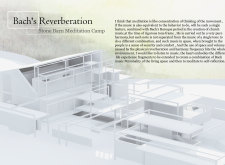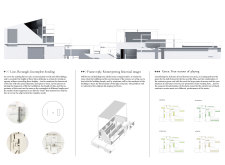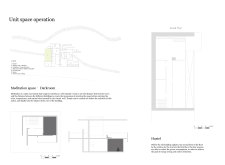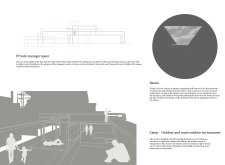5 key facts about this project
**Overview**
"Bach's Reverberation" is a meditation camp located within a tranquil environment that draws inspiration from the intersection of music and meditation. This architectural design aims to create a holistic space conducive to self-reflection and tranquility by integrating natural elements, historical context, and contemporary structural innovation.
**Spatial Arrangement and Outdoor Integration**
The layout emphasizes a fluid connection between indoor and outdoor spaces, facilitating both communal and solitary experiences. Key features include a central meditation hall that serves as a gathering space, surrounded by nature to enhance mindfulness. Adjacent dining and gathering areas promote community interaction, while private retreats offer intimate environments for personal reflection. The design also incorporates terraces and courtyards, which encourage engagement with the natural landscape, creating pathways that mirror musical lines to foster exploration and quiet contemplation.
**Material Selection and Sustainability**
Material choices play a critical role in achieving the project's vision. The primary structure is formed with durable concrete, complemented by extensive use of glass to allow natural light to permeate meditation areas, enhancing the connection to the outdoors. Local wood introduces warmth to the interiors, while steel provides structural integrity and a modern aesthetic. Natural stone cladding echoes surrounding landscapes and promotes cohesion with the environment. The camp also emphasizes sustainability, featuring rainwater recovery systems and thoughtfully integrated greenery that adapts to seasonal changes, reinforcing the connection between the built environment and nature.





















































